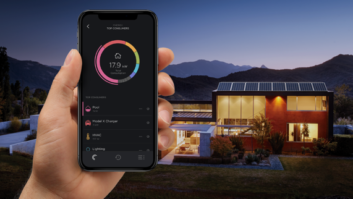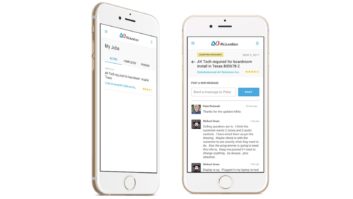
My good friend Mark Feinberg, owner of Home Theater Advisors (HTA), and I talk several times a week. Sometimes it is about our families, what we did for the weekend, etc. Most of the time it is about our businesses and our industry as a whole. We bounce ideas off of each other constantly — whether it is how to handle a tricky technical situation, talk about the newest technology and how to implement it, or how to handle a challenging customer interaction. Today we were talking about a situation Mark ran into recently when a customer, who declined a paid 24/7/365 support plan, was charged for providing remote support.
Also by Todd Anthony Puma: Two Service Plan Strategies
First, some background. Home Theater Advisors is small shop (owner and two installers) and specializes in what they consider the “middle-market” — their projects range in size from $5000 single-room solutions to about $75,000 for a fully fitted NYC townhouse. They sell a lot of Sonos, Control4, Araknis, and Eero.
About six months ago, Home Theater Advisors installed an AV system for a client with the following:
- Surround sound system in one room with a Control4 universal remote solution
- All control via Serial or IR (see network bullet below)
- Two additional rooms with Samsung Frame TVs using the original FiOS remote
- Sonos throughout the home, with the two Frame TVs connected via ARC to the Sonos AMPs for those rooms
- Network provided by FiOS — client wanted to “see how it works” before upgrading to a professional-grade system
- Wattbox and OvrC Pro for remote support
As we both always do, Mark explained to the client throughout the process that there will often be some glitches in the first week or two of heavy usage and that HTA would take care of any issues for the first 60 days. He also presented the 24/7/365 support offerings (powered by Parasol), including free remote support. The plan documentation (a very easy-to-digest one-sheeter) also clearly states that those not on a support plan will pay for service calls and remote support.
Within the first few days of installation there were some tweaks the client wanted done to the surround system, including custom soundfield programming, and some tweaks to the calibration to make dialog even more prominent. The client also emailed with some questions about the system that he had forgotten during the handover process and HTA answered them quickly. When responding on Monday to a small issue that came in over the weekend, Mark reminded the client about the 24/7 support offerings, as the client had not yet signed up and had not actively declined. The client took offense to being sold a support plan for his $30,000 system (he liked to throw that number around a lot) that was still being tweaked. Mark apologized for any offense he took, and agreed the optics of discussing the support plan while providing warrantied support could be misconstrued.
Fast forward five months later and the client is having issues with the Sonos and ARC. The client emailed to describe the problem. Mark did the research and sent the client a few ideas and links, with the ultimate solution being to re-program the FiOS remote for the Frame TV as it seems the FiOS remote is no longer controlling volume. The solution worked and Mark sent a bill for the remote support. Again, the client took offense and during a phone call to discuss, cannot believe he is being “nickel-and-dimed after spending $30,000.” Mark did as I would do, and he waived the fee and sent the client a zeroed-out invoice.
He also reiterated to the client that future remote support is billable time and resent the information on support plans.
Also by Todd Anthony Puma: Great Service Leads to Customer Loyalty
So what are the lessons Mark and I learned from this after rehashing it together? We came up with three key takeaways
- Continue to always sell support plans, even when client does not seem interested. On every support call, reiterate that faster support is available with a dedicated line and personnel for those on support plans. Mark has added a line to his email signature that says, “Never wait for tech support with our 24/7/365 support plans” and has a link to his website to sign up.
- Have printed material. Give clients one-sheeters or handouts spelling out what they get with and without a paid support plan. Be very clear about the costs associated for service without a plan—both in writing and verbally—before, during, and after the project installation.
- Have a middle man if you can. Do not provide direct access to the company owner. When clients know they are talking to the owner, they will always push for more. Many of our clients are business owners or senior executives themselves and know how important good customer service is. They will maximize that knowledge to their advantage. If they are speaking with someone else they are less likely to push as hard. That middle man can be your lead tech who takes all service calls (and is paid accordingly), your office manager, sales person, service manager, or even your spouse. My wife is also the office manager for The Source. She takes all of these calls. Even better, she uses her maiden name professionally so clients do not realize she is my wife, making it easier for her to be firm and not have them press her as hard as they would if they knew she was my wife.
Unfortunately Mark’s company does not have the infrastructure for this, so he is still first line of defense for those not on a support plan
What tips do you have for handling these types of customer interactions?
Want more stories like this delivered to your inbox every day? Then sign up for the free Residential Systems eNewsletter here.







